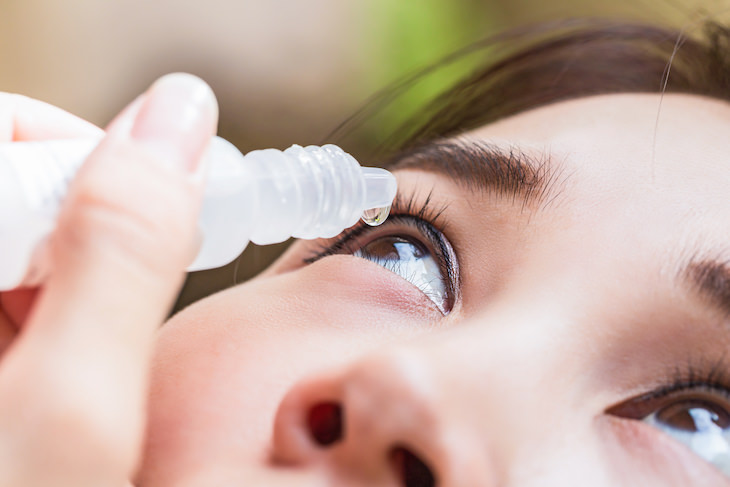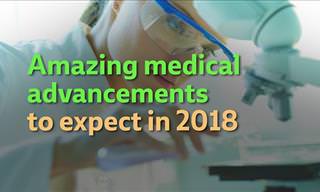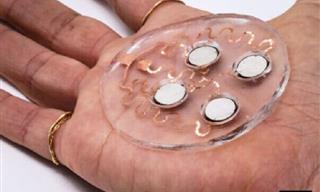1. 3D printed body parts
Image Source: Flickr
3D printing is widely regarded as an industry-changing technology in fields ranging from consumer goods and manufacturing to architecture. But 3D printing has an even more profound potential - it could be used to help millions of people in need of artificial limbs and braces worldwide, according to The Guardian.
In the past decade, medical researchers made groundbreaking achievements in the development of 3D printing, also known as additive manufacturing. Some of the most noteworthy ones include 3D-printed skin for burn victims, airway splints for infants, facial reconstruction parts for cancer patients, and orthopedic implants for pensioners. The fast-developing technology has also produced more than 60 million customized hearing aid shells and earmolds. Every day, it is churning out thousands of dental crowns and bridges from digital scans of teeth, replacing the traditional wax modeling methods used for centuries.
Taking additive manufacturing up a notch is bioprinting - a process when living tissue like bone, blood vessels, and human cartilage are produced based on a digital model. Bioprinting allows the creation of artificial organs like synthetic ovaries and even a pancreas. In a previous article, we have shared with you that scientists at Tel Aviv University in Israel managed to create the first-ever human heart copy using a 3D printer and human cells in 2019.
The rapid growth of this industry is one of the most hopeful medical developments of the past decade. By increasing efficiency and safety, and drastically lowering the cost, 3D and bioprinting make life-saving treatments more easily accessible to countless patients worldwide.
2. CRISPR gene editing
CRISPR (which stands for Clustered Regularly Interspaced Short Palindromic Repeats) is the name of a technique used to edit DNA quickly and easily. As such, it is likely to change the world. This is how it works: firstly, a specific DNA sequence is detected in a cell. Then, CRISPR is used to alter that piece of the DNA, or in some cases, to snip it off completely. Although the basic mechanism was discovered decades ago, the technology has become more precise and easier to use in the past few years.
2017 was a landmark year for many gene therapy breakthroughs. This was the year when scientists at Oregon Health & Science University in Portland successfully removed a heart disease defect in an embryo using CRISPR. The potential of this technology is immense: it could enable us to not only treat but also prevent many diseases. In 2019, a woman named Victoria Gray became the first American with sickle-cell disease to be treated with gene-editing technology, and she will soon celebrate two years of being symptom-free.
Researchers have great hopes for gene therapies like CRISPR. Recent experiments revealed its potential to reverse leukemia and breast cancer. In the best-case scenario, gene therapy could be used to eliminate the need for traditional treatments like radiation, chemotherapy, or surgery in the future. However, experts stress that there is still a lot to learn about the long-term consequences of these treatments.
3. Cure for Hepatitis C
Hepatitis C is a potentially fatal liver disease caused by the hepatitis C virus. The disease can be either acute or chronic, with severity ranging from a mild illness lasting a few weeks to a serious lifelong condition. Hepatitis C can often lead to liver cancer and is responsible for 8,000-10,000 deaths a year, according to the World Health Organization.
Until recently, the only available hepatitis C treatment was a heavy antiviral drug treatment program, which lasts nearly a year and is associated with major side effects.
In 2017, after a long testing process, the FDA approved the use of a new drug called Sofosbuvir. With a 95% success rate and a treatment program lasting only 12 weeks, Sofosbuvir helps patients be treated quickly and increases their survival rate significantly.
The novel drug works by blocking the action of particular proteins or enzymes which the Hepatitis C virus needs to replicate and infect liver cells. Sofosbuvir works against all six major types of Hepatitis C, has few side effects, and requires only one daily dose. While all of these qualities make it ideal for widespread use, the one drawback of Sofosbuvir is its high price point - $1,000 per pill for a 12-week treatment. Hopefully, a subsidizing solution can be found soon, and the treatment will become accessible for everyone who needs it.
Related: These Medical Breakthroughs Will Help Save Countless Lives
4. Treatment for migraines and cluster headaches 
Roughly 39 million people in the United States and 1 billion people in the world suffer from migraines, making it the third most common illness in the world. Cluster headaches, while much less widespread, also pose a big problem to those who suffer from them. Both are excruciatingly painful attacks of headaches that occur periodically over the course of the year. Until recently, the cause for these conditions was unknown, making them even more bothersome for patients.
Fortunately, researchers at the Cleveland Clinic have developed an effective treatment for both of these conditions. It is a device called gammaCore, which was cleared for use by the FDA in 2018. The device is placed on the neck to stimulate the vagus nerve. One of the properties of the vagus nerve is that it connects to the heat pain system within the brain stem.
It differs from previous vagus-nerve stimulators, which were implanted by a surgical procedure. In other words, it is the first non-invasive treatment for cluster headaches. Two major studies, one conducted in Europe and another one in the US, both showed the same results: the device can shorten a cluster headache and can be used two or three times a day as a preventative measure.
Related: The 4 Major Types of Headaches: What to Look Out For
5. Eye-drops that can 'melt away' cataracts 
Cataracts are a leading cause of blindness around the world, and current treatment options are limited to an operation that replaces the clouded lens with an artificial one. However, in 2015, a team of scientists from different US universities found an alternative to the invasive and expensive treatment - two compounds that could “melt” cataracts away when applied as an eye drop.
A cataract forms when a natural protein clumps and folds together, which causes the lens to lose transparency. The researchers reviewed almost 2,500 different chemicals to identify two sterols known as lanosterol and compound 29. When used in eye drops, these compounds were able to dissolve the clumps of protein in the eyes of lab mice and restored their vision. Their efficacy was also proven in rabbits and dogs with cataracts.
Further research is still needed to confirm that the drops are reliable and viable for cataracts in humans, but the research team is optimistic. “Further research in this area is planned, but this discovery could potentially revolutionize the way cataract is treated. This would have exciting implications for public health," said the lead author Professor Barbara Pierscionek of Anglia Ruskin University.
Found this article interesting? Share it with others!
 Go to BabaMail
Go to BabaMail





























